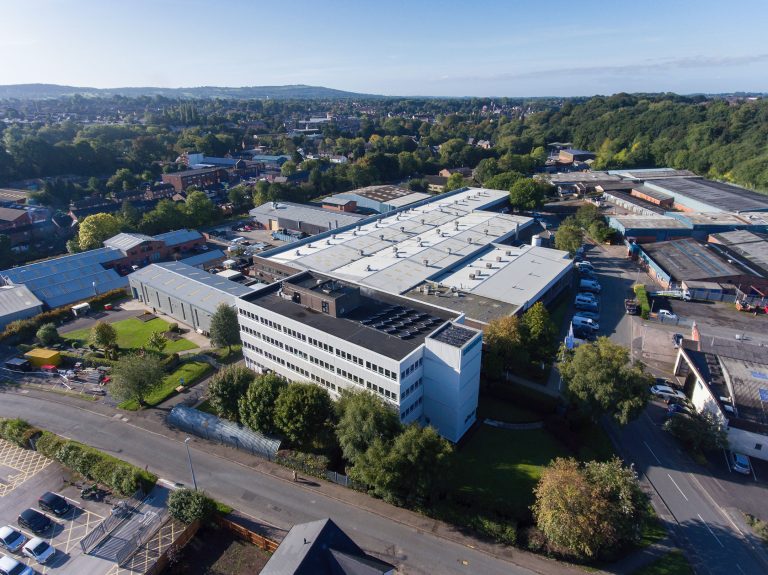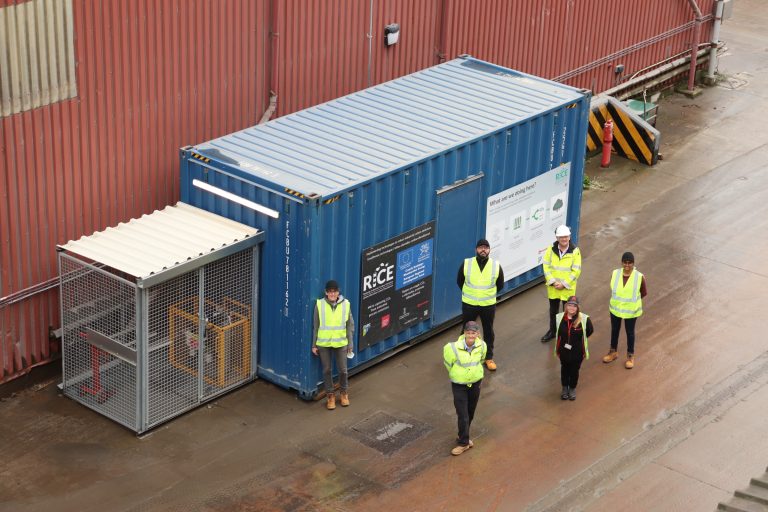Partnership between Siemens Digital Industries and Smart Infrastructure businesses accelerates factory towards net zero Sustainability milestone paves way for UK manufacturing sector Siemens’ Congleton factory is on track to achieve carbon neutrality this year – eight years ahead of its original target. The operation, which manufactures more than 1.2m controls and drives each year, is inching its way to the major milestone after deploying a range of sustainable solutions for energy generation and demand with support from Siemens’ energy and performance services business, Smart Infrastructure. These include generating 75kw of renewable energy through a hydro-electric plant at Havannah Weir on the river Dane and using carbon neutral, certified biogas to power its on-site gas engine. These measures alone saved over £250,000 pounds a year and took the 80% power-independent factory off the grid. Beyond these innovations, Siemens Congleton adopted a building management system which automatically adjusts to drive energy efficiency improvements, while modern windows and LED lighting have reduced the total energy bill by 13% and 30% respectively. Combined with reducing waste to landfill to zero and EV charging for staff and visitors, the Cheshire site is eight years ahead of Siemens’ original 2015 commitment to ensure carbon neutral operations by 2030. Commenting on the achievement, Andrew Peters, Managing Director of Siemens Digital Industries Congleton, said: “Siemens believes that sustainability is a force for good and can deliver value for all its stakeholders. We want to help customers achieve sustainable growth and to transform their industries through decarbonisation. The first step of that is for us to achieve these ambitions in our own operations. “I am delighted that by leveraging a culture of continuous improvement and sustainability – the vital components to Siemens’ Congleton’s long-term success – we have achieved carbon neutrality, a major milestone in our ambitions to reach net zero emissions by 2030.” The 50-year-old Siemens Congleton factory began its sustainability journey in 1990 when it began manufacturing drives to meet the demands of industry. In 2018 the factory became fully digital by embracing lean manufacturing methods to achieve continuous improvement and by adopting leading-edge Industry 4.0 processes. Using advanced manufacturing methods include Virtual Reality, Digital Twin, the Industrial Internet of Things (IIoT), Advanced Robotics, Cloud Technology and Additive Manufacturing, it has mastered producing up to 50,000 variations of its products to fulfil the shifting demands of its customers and markets, increased productivity by driving down costs, and improved efficiency. In 1990, 400 workers made 50,000 variable speed drives and controls a year. Today, a similar number of workers produce 1.2 million electrical devices – including 600,000 variable speed drives (VSDs). What is more is that it has been achieved within the same physical footprint. The factory is bounded by industrial units and housing estates, with no room to expand, meaning Congleton has one of the highest productivity rates per m2 of any Siemens’ sites. Faye Bowser, Head of Siemens’ Energy & Performance Services GB&I, said: “The climate emergency puts the demand on businesses of all sizes and sectors to really accelerate their efforts for decarbonisation. But a challenge is that often decarbonisation isn’t their core business. So, at Energy and Performance Services we make it our business to use our skills, our knowledge and our tools to help our customers transition to net zero in a way that contributes to their business priorities. “Despite us being from the Siemens family, we have approached working with Congleton the same we do with any organisation. It has been fantastic. In Andrew Peters you have a leader in a business which has put continuous improvement and sustainability at the heart of their long-term success. Our job was to apply those components to their energy system and their energy strategy. What we ended up with is an engineered roadmaps to net zero that considers timelines, finance, digital services, all there to safeguard business continuity, and to have a method to continuously identify more opportunities to reduce carbon on site.” The Congleton factory is leading the way for Siemens which has committed, as a global organisation, to ensure all its operations are carbon neutral by 2030 and for all production facilities and buildings to achieve net zero-carbon footprint by 2030. In the UK Siemens’ progress has been recognised by The Carbon Trust, an expert partner for supporting organisations to achieve science-based targets. In June it awarded Siemens its Route to Net Zero Standard tier one certification for ‘Taking Action’. Commenting on this milestone achievement, Olivia Whitlam, Head of Sustainability, Siemens Plc said: “Siemens is taking a holistic approach to achieving net zero and we are pleased to be guided by the Carbon Trust who helps us monitor our progress each year. “We have 8,600 people spread across offices and 11 manufacturing sites across the UK and we are creating innovation up and down the country with sustainability at the core of our operations and services. Our Congleton factory is paving the way for sustainability whilst setting a great example on how manufacturers can join this amazing journey to net zero.” Congleton’s trailblazing story will be shared at Siemens’ two-day conference and exhibition, Transform 2022 at Manchester Central on July 12 and 13. The event will bring together hundreds of industry leaders, influencers and regulators from across the UK and Ireland to collaborate and solve some of the most pressing organisational challenges. To register for Transform 2022 visit: https://new.siemens.com/uk/en/company/fairs-events/events/transform-2022.html














